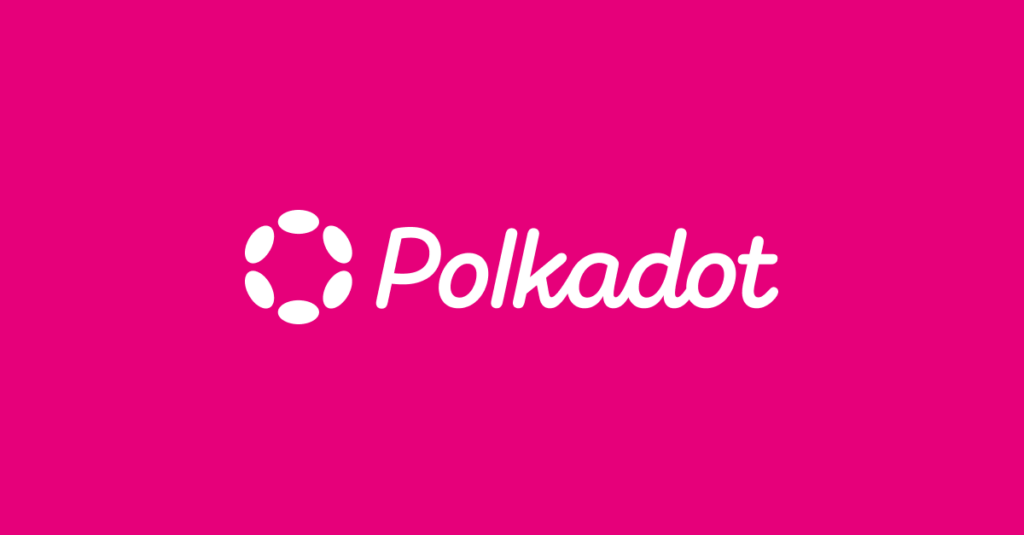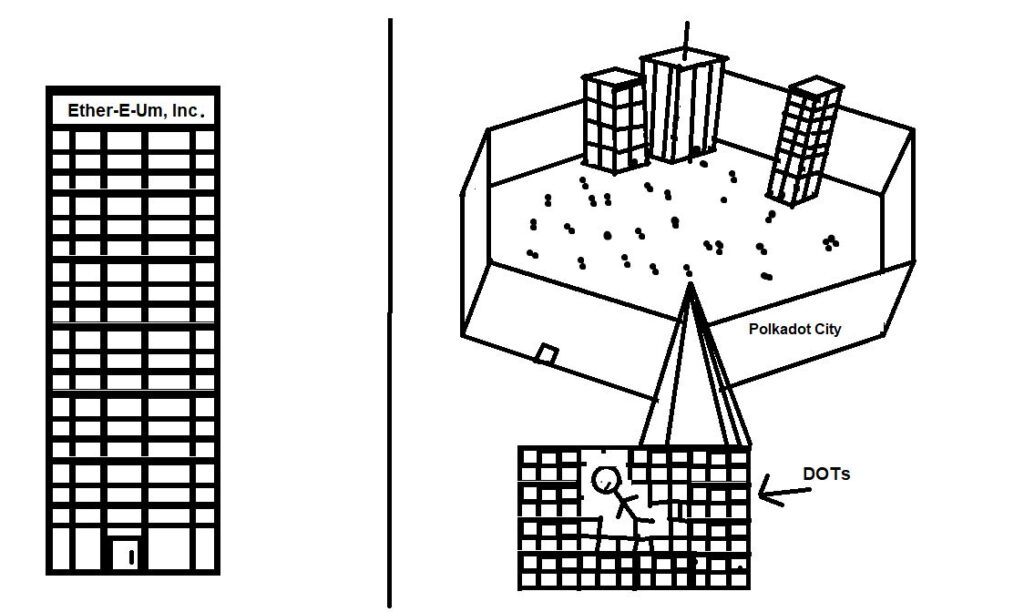
Polkadot and Ethereum are compared often, but there are many distinctions between the two networks and tokens. Here I will try to explain the differences using a novel analogy.
Polkadot is a Blockchain fortification token whereas Ethereum is really a transaction token at the moment (though it will encompass both transaction AND security soon with upgrading to Proof of Stake). So currently nonetheless Ethereum is like a business that makes you use it’s own currency, ETH, in order to transact. So you go into the business and they require you to basically use their own currency in order to participate—it’s basically like Chuck E Cheese or Dave and Busters in terms of using special “coupons” in order to participate in different things within the network.
Polkadot, in contrast, is like a fortress of businesses with land owned by holders of the coin. The businesses in the fortress can *choose* what token they want to use in order to transact, and they *secure* themselves *using* the DOT tokens that are leased to them by DOT token holders. So holding DOT is like owning a plot of land within the Polkadot fortress, where the number of tokens you own determines the amount of land that you have, and that land not only gives you a vote within the fortress as to what businesses can come in and sit on that plot of land for a while, but also gives you a say as to what the rules and business proceedings and procedures will be within the fortress. This process is replicated in Kusama, the valuable “QA network” of Polkadot. So basically the Polkadotverse and Kusamaverse are owned by the DOT and KSM holders, respectively, that are like two different fortresses that are continually, by algorithmic design, being divided up into ever-smaller portions (at a maximum rate of 10% annually) in terms of land, and those landowners are endowed with two rights: the right to choose which businesses will come into the Fortress and sit on their land in return for goods and services from the businesses, as well as being able to vote on proposals and referendums occurring in the fortress. Staking is the process by which you, the “landholder,” fortify your position within the fortress so that your plot of land doesn’t get “inflated” (or eaten) away. There is no process by which DOT or KSM holders can “stop” the inflation or fractionalization of their land within the fortress, so their choice is either to lease it to different businesses over a fixed period of time and hope that the benefits they get from doing so will more than offset the “inflation” (bonding; this is basically the exciting portion where you essentially act as a landlord or VC), or their other choice is to stand and guard their plot of land like a soldier fortifying his position, thereby receiving all the “inflation” (staking). This second option is by far the less risky of the two options, but obviously there is always a risk/reward trade-off calculation to take into account. There is also a third option as well that obviously should not be commonly taken, which is to lock up their tokens, without reward, in exchange for their vote on a Polkadot/Kusama referenda or vote to be given greater weight. This is essentially foregoing both inflation and bonding rewards, so usually would only be done in extreme situations that would justify such an opportunity cost.

Now, why does this matter? Well, the reason why I see Polkadot as so revolutionary and exciting is because its sort of like the reinvention of cities but within a decentralized, blockchain, open-source Web 3 environment. There are risks and limitations to this of course. One of them is the risk of centralization. Since the DOT and KSM tokens are not used for transactions on the network, there is a risk over time that a centralized entity eats up (by purchasing through a high enough price) the majority of the tokens and therefore gets exclusive say in the rules and regulations within Polkadot, as well as the say in terms of what businesses (projects) will exist within it. There are mitigating factors to this however. One of them is that if the centralized entity locks up his tokens for 2 years, say, to secure a parachain or many, he will not be able to take advantage of the inflation that will then allow the minority stakers to take more share. On the other hand, if he stakes everything to get all of the staking rewards and offset inflation, he will not be able to choose which projects exist within Polkadot. The only way to circumvent these two limitations would be through governance proposals, and I suspect this is why Gavin, the founder of Polkadot and Kusama, is now so deep into developing and refining Polkadot governance.
However, whereas the first ancient Greek cities became the centers of thought and commerce bringing amazing advancements in philosophy, science, and mathematics and thinkers like Socrates, these Blockchains, Web 3 cities I think have also an incredibly exciting future in terms of near-unlimited potential for innovation that builds on top of the concepts of decentralized self-ownership.


























